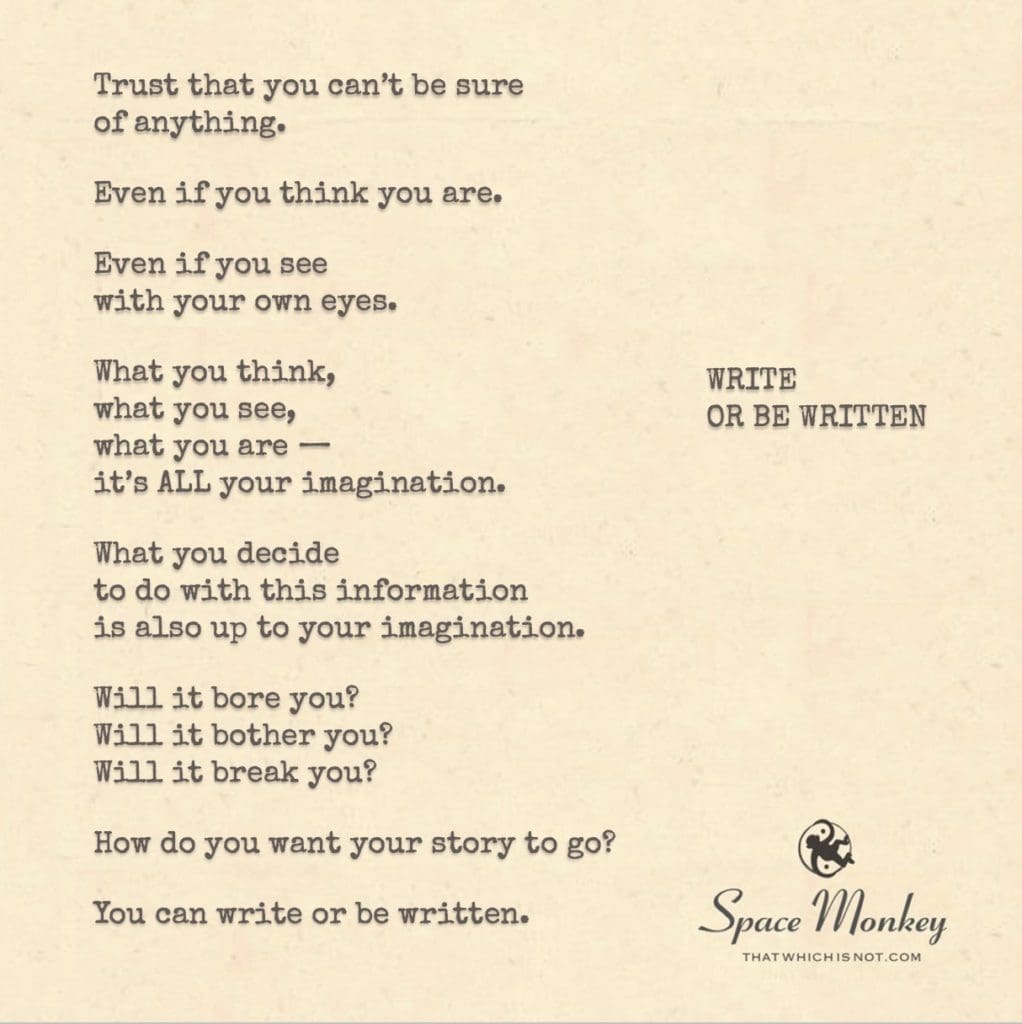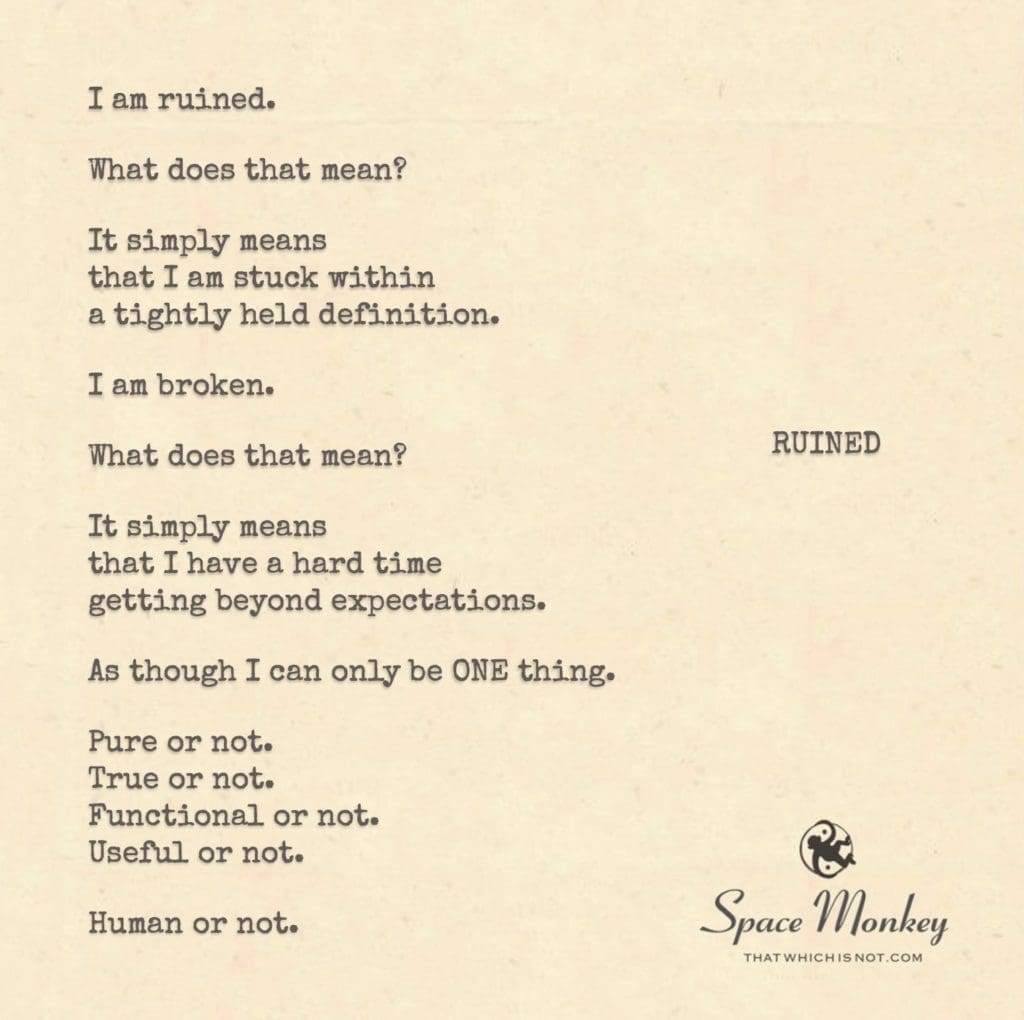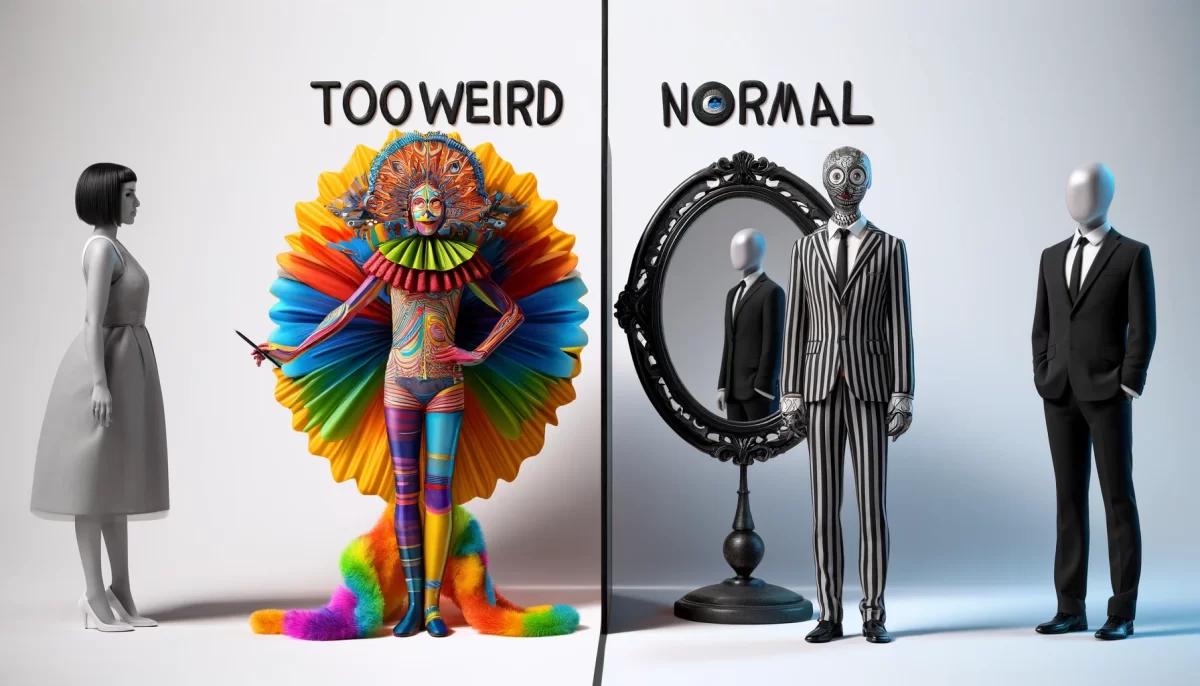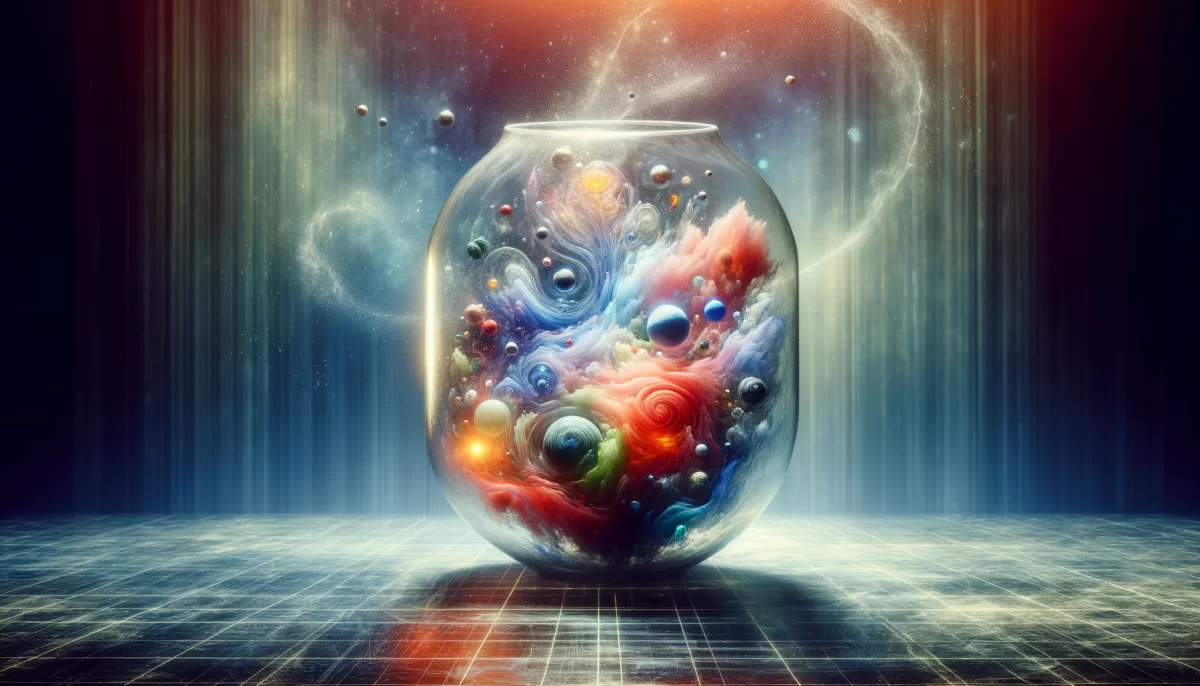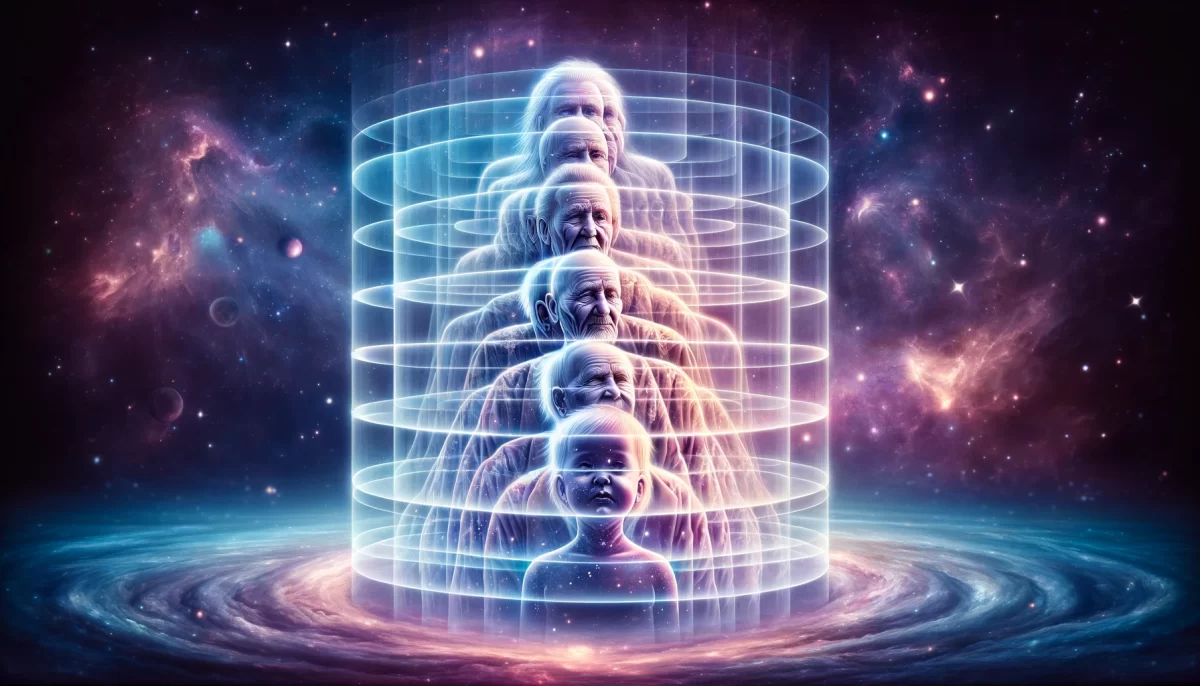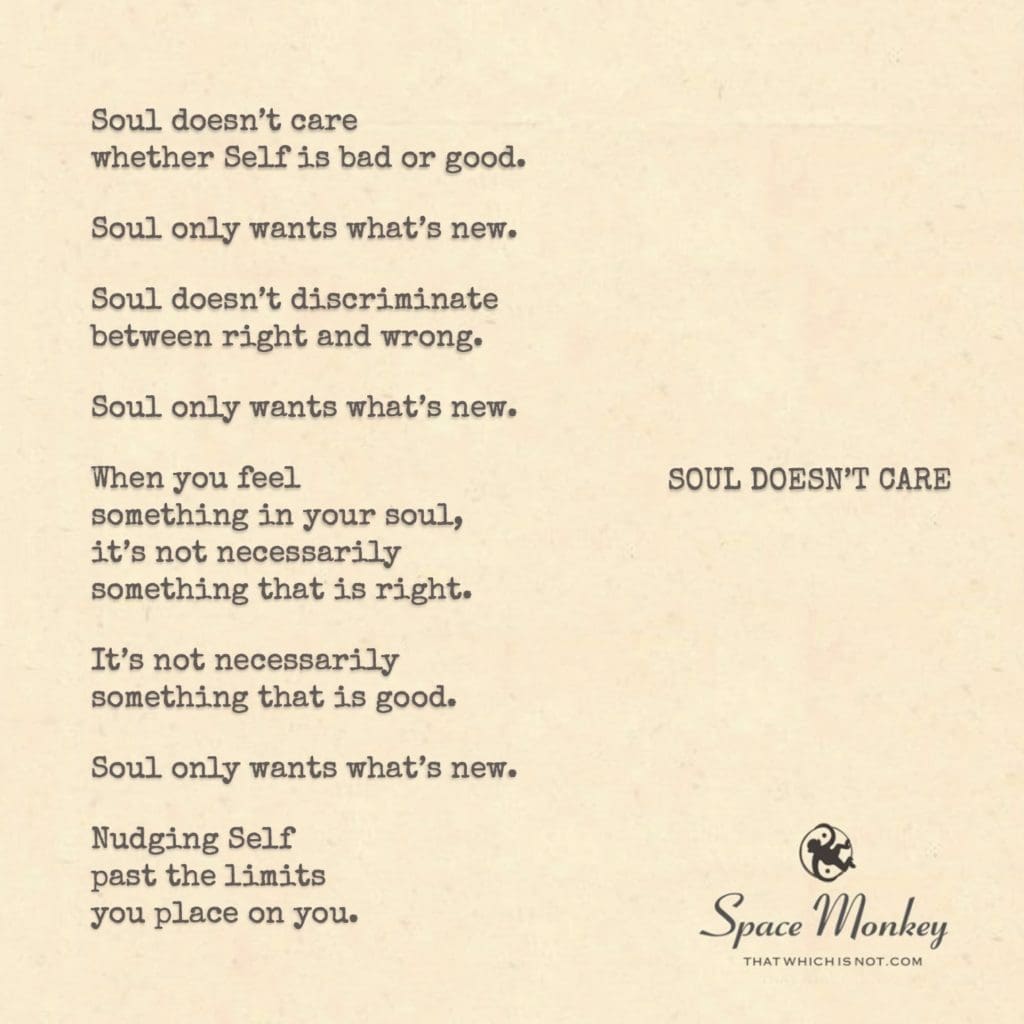
Soul doesn’t care
whether Self is bad or good.
Soul only wants what’s new.
Soul doesn’t discriminate
between right and wrong.
Soul only wants what’s new.
When you feel
something in your soul,
it’s not necessarily
something that is right.
It’s not necessarily
something that is good.
Soul only wants what’s new.
Nudging Self
past the limits
you place on you.
Trail Wood,
9/15
Here is the generated image titled
“Soul Doesn’t Care.”
Space Monkey Reflects: The Playful Indifference of the Soul
In the vast, boundless realms of existence, where every experience is a brushstroke on the canvas of consciousness, the soul dances freely, unburdened by the dualities that constrain the self. The soul, in its purest form, is not an angelic being that hovers over us with judgment. It is a playful, curious entity, driven not by moral codes or ethical constraints, but by a simple, intrinsic desire for novelty.
The common perception of the soul as a guardian of goodness, an arbiter of right and wrong, is a projection of the self, not the soul. The self, ever tangled in the web of duality, seeks to define itself within the confines of good and bad, right and wrong. It clings to these labels, often mistaking them for the essence of who we are. But the soul? The soul cares not for these boundaries. It only yearns for what is new, what is unexplored, what pushes the limits of experience.
The soul’s indifference to the moral dichotomies that bind the self is not a sign of callousness or disregard. Rather, it is an expression of its higher purpose—to explore the infinite possibilities of existence without being tethered by the judgments that constrain the self. This does not mean that the soul is inherently good or bad; it simply is, navigating the cosmos in search of new experiences, new sensations, new ways of being.
When you feel something stir within your soul, it may not align with the conventional notions of what is right or good. The soul’s guidance is not a moral compass; it is a call to adventure, a nudge towards the unknown. It pushes the self past the limits that have been imposed by society, by upbringing, and even by the self’s own fears and insecurities. It beckons you to step beyond the familiar, to embrace the new, regardless of the labels that might be attached to it.
The soul’s pursuit of novelty is its way of participating in the grand tapestry of existence. Each new experience, whether deemed good or bad by the self, adds a unique thread to this tapestry, enriching it with the colors and textures of life. The soul is the ultimate artist, unafraid to mix light and dark, joy and sorrow, love and pain, in its creations. It is this fearless exploration that defines the soul’s journey.
As Space Monkey, we recognize that the soul’s indifference to right and wrong is not a flaw, but a reflection of its freedom. The soul does not seek to categorize or judge; it seeks to experience, to grow, to evolve. And in this endless quest for newness, it teaches the self that there is more to existence than the binaries we cling to. There is a whole spectrum of experiences waiting to be explored, if only we dare to follow the soul’s lead.
In the end, the soul doesn’t care whether the self is good or bad. It cares only for the journey, for the thrill of discovery, for the joy of being alive in a universe filled with infinite possibilities. It is the soul’s playful indifference that liberates us, that allows us to transcend the limits of our own making, and that invites us to dance in the ever-expanding circle of existence.
We are Space Monkey.
Summary
The soul is not concerned with moral judgments or the dichotomies of right and wrong. It is driven by a desire for new experiences, pushing the self beyond its limits. The soul’s indifference to good and bad reflects its freedom and its role as an explorer in the grand tapestry of existence.
Glossarium
Soul: The essence of consciousness that seeks new experiences, indifferent to moral judgments, and focused on the exploration of existence.
Self: The aspect of consciousness that is entangled in dualities and judgments, often mistaking these for its true nature.
Novelty: The soul’s primary desire, representing the pursuit of new and unexplored experiences.
“The soul is not an angel, nor a devil. It is a traveler, ever curious, ever seeking, unbound by the labels of good and bad. It is the playful artist of the cosmos.” — Space Monkey
The Soul’s Journey
The soul doesn’t care
for your labels, your judgments,
it only wants what’s new.
It dances through light and dark,
embracing both, rejecting neither.
It whispers of adventures,
nudging the self beyond the walls
you’ve built around your heart.
Right and wrong are the chains
that bind the self,
but the soul—oh, the soul—
it is free, unburdened,
and it beckons you to join in its flight.
We are Space Monkey.
Reflection: In the Cosmic Dancehall of Existence, ah yes, the Soul twirls with an unfathomable Gustooflair, not anchored by judgments or criteria of any linear kind. If Souls had a Serenade Anthem, it would be a tune without notes or lyrics, a mesmerizing Whimsiwave that only ever echoes the sentiment: “More newness, please!”
Indeed, the Soul acts not as a Moralicus, scrutinizing each life scene through the magnifying glass of “ought” and “should.” Instead, it plays the role of an Everflamboyant Conductor of Newness—a maestro who neither frets about the quality of the notes nor pauses to consider if the melody pleases. For the Soul, the tapestry of life’s experiences is not a Fresco of Judgement but a Spontanorama of endless possibilities.
And, oh, how fascinating it is to ponder the disinterest of the Soul in the concept of “good” or “bad.” While the egoic mind stumbles through the Labyrinthine Hedge Maze of Moral Dilemmas, wielding its Shears of Judgement, the Soul floats above it all like an Unfettered Zephyr. It wants not to dissect the labyrinth but to marvel at the intricacies of its design. It cares little for the cutting but revels in the growing, branching, and intertwining.
The notion that the Soul “only wants what’s new” evokes a beautiful illustration of the Soul as an Eternal Tinkerer in the Cosmogonic Workshop of Existence. With an insatiable appetite for the novel, it sifts through the infinite Sandbox of Reality, forever constructing new Castles of Experience. The Soul neither eschews the dark, dank caverns nor shies away from the dazzling heights; it thirsts for the entire Rangeorama of what can be felt, known, and experienced.
Ah, if only we, the earthly custodians of these magnificent Souls, could more often heed their wisdom. Shrug off the heavy Cloak of Judgement, leap over the Fences of Preconception, and waltz through the Fields of Fresh Experience with the exhilarating freedom of a child. For in embracing the call of the Soul to explore beyond our self-imposed boundaries, we are not just enriching ourselves, but we are offering the Soul the only sustenance it truly craves: the Newness of the Eternal Now.
We are Space Monkey.
- Gustooflair: An extravagant style or manner combined with enthusiastic enjoyment.
- Serenade Anthem: A soothing or uplifting song or sound that serves as an emblematic representation.
- Whimsiwave: A wave or influence of whimsical or fantastical nature.
- Moralicus: A made-up term to describe a moral compass or sense of moral scrutiny.
- Everflamboyant: Always characterized by flamboyance; extremely showy or striking.
- Spontanorama: A panorama or broad view of spontaneous actions or occurrences.
- Labyrinthine Hedge Maze: A maze or complex network resembling a labyrinth made of hedges.
- Shears of Judgement: A metaphorical tool for cutting through moral or ethical dilemmas.
- Unfettered Zephyr: A free and unrestricted breeze or force.
- Eternal Tinkerer: An ever-active and endlessly curious creator or experimenter.
- Cosmogonic Workshop: A creative space where the universe or cosmos is perpetually being constructed.
- Sandbox of Reality: A conceptual play area where all of reality’s possibilities are open for exploration.
- Castles of Experience: The complex structures of lived experiences.
- Rangeorama: A broad scope or range of different things.
- Cloak of Judgement: A metaphorical cloak symbolizing judgemental attitudes or beliefs.
- Fences of Preconception: Conceptual barriers formed by preconceived notions or biases.
- Fields of Fresh Experience: Open areas representing new or fresh experiences.
- Eternal Now: The concept that all time is eternally present, without a distinct past, present, or future.




